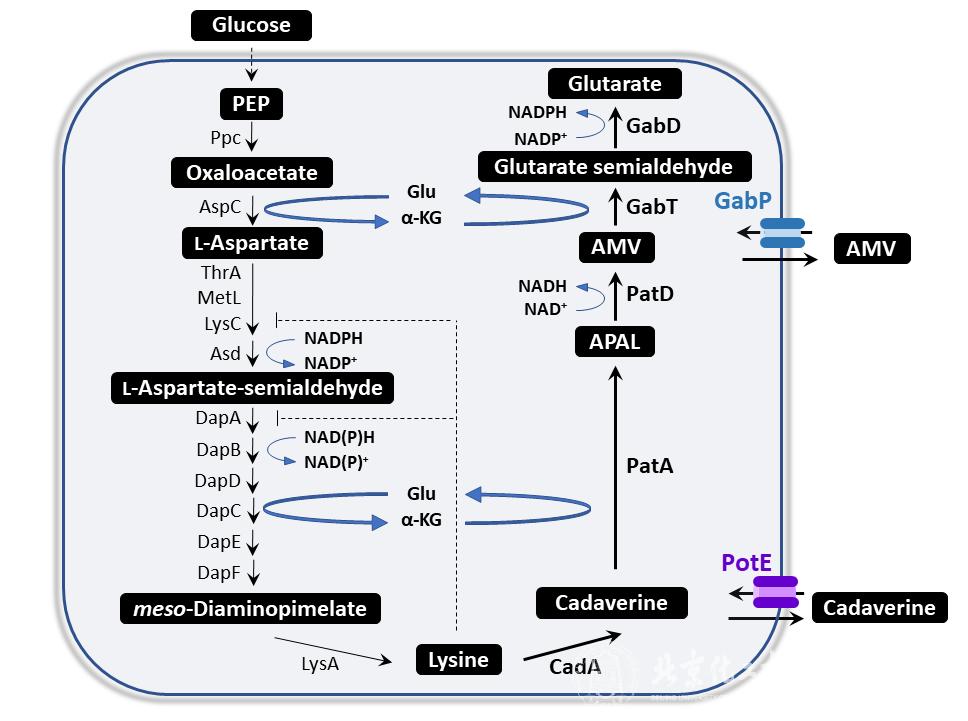Professor Yuan Qipeng and Associate Professor Sun Xinxiao published a research paper in Nature Communications
Recently, Professor Yuan Qipeng and Associate Professor Sun Xinxiao from State Key Laboratory of Chemical Resource Engineering and College of Life Science and Technology published a research paper Targeting metabolic driving and intermediate influx in lysine catabolism for high-level glutarate production in Nature Communications, for the first time to use E. coli native lysine catabolism mechanism to achieve efficient biosynthesis of glutaric acid. This work demonstrates the ability of metabolic drives to redirect carbon flux and the role of transporters in reducing intermediate accumulation.
Glutaric acid is an important dicarboxylic acid used in the manufacture of polyesters and polyamides. In recent years, the development of its efficient biosynthetic pathways has become a research hotspot. In this study E. coli native lysine catabolism mechanism was engineered to biosynthesize glutaric acid without introducing foreign genes. By (1) recycling of glutamic acid and NAD(P)H, (2) releasing feedback inhibition, (3) increasing precursor supply, strong metabolic driving forces were generated, which greatly increase the carbon flux to the target product. In addition, through the screening and expression of transport proteins, the problem of extracellular accumulation of pathway intermediates was solved. Finally, under fed-batch conditions, the titer and yield of glutaric acid reached 54.5 g L-1 and 0.54 mol mol-1, respectively. This study provides an effective strategy for efficient synthesis of other long-path chemicals.
The first author of the paper is Li Wenna, a doctoral student of College of Life Science and Technology, Beijing University of Chemical Technology, and the corresponding authors are Professor Yuan Qipeng and Associate Professor Sun Xinxiao.

